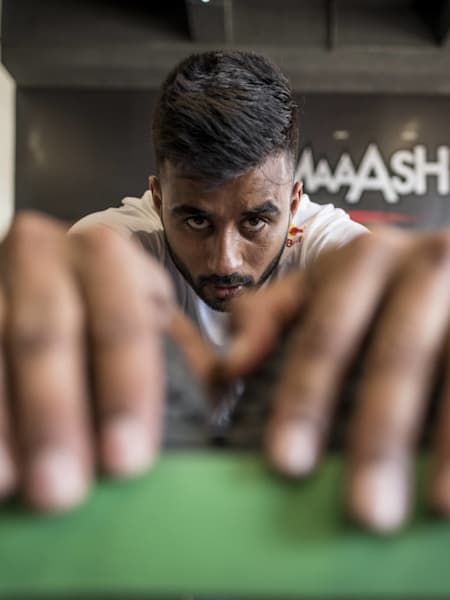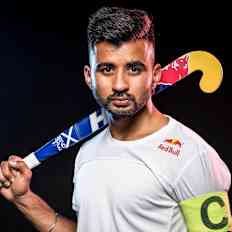Manpreet Singh has been one of India’s top hockey players for many years.
As one of the fittest players on the team, he puts in long shifts with every match he plays, running up and down the field tirelessly. These efforts saw him be named the 2019 FIH Player of the Year, becoming the first Indian to win the award.
He says much of his fitness has been because of his focus on his core muscles. So we asked him for tips on how he trains his core muscles and specifically his favourite exercise, planking,
Name of the exercise: Planks
Manpreet’s favourite exercise is planking, which he began doing as a junior hockey player and has continued to practice throughout his career.
“I first learnt about planking when I was in the hockey academy. I got better at it when I joined the national camp as our trainer would guide us on the correct way of doing it,” says Manpreet.
What are planks?
Planks are abdominal and core exercises that require you to load specific muscles of your body by maintaining good form. They are a static exercise, which means you contract muscles and hold a particular position for as long as possible to exercise the muscles.
Targeted muscle groups
Planks primarily engage and strengthen the core muscles; these include the pelvic muscles, abdominal muscles, obliques, and muscles along the spine. Since the exercise engages so many muscle groups, it is often considered a full-body workout.
“Planking works your core, which means it basically works the whole body. The plank strengthens your spine, your abdominal muscles, back and shoulder, which naturally results in a strong posture,” says Manpreet.
Benefits of planks
The most important benefit of planking is strengthening of the core muscles. Since the core muscles help stabilize, balance and provide power to the body, planking is a great exercise to improve athletic performance.
“Improved metabolism, improved flexibility, improved coordination, decreased risk of back injury, improved posture, and most importantly it improves your mood,” says Manpreet when asked to list the benefits he gains from doing planks.
Planking is also a low-level cardio exercise since it engages a wide range of muscles, which gets your heart rate up and burns a few calories too.
How to perform the exercise
Here is Manpreet’s step-by-step guide on how to practice planking.
- Make sure your elbows are directly under your shoulders
- Line your wrists up with your elbows
- Push your body upwards and tuck your chin into your chest leaving a bit of space (make sure your breathing is not restricted)
- Ensure your body is in a straight line throughout the duration of your plank
Additional advice from Manpreet: “For a beginner, it is advisable to do planks of 60 seconds at a time and practice it every day for maximum benefits.”
How planks help Manpreet in hockey
Hockey players spend most of the 60 minutes of match time bent low. With the way the game is played nowadays, they are also constantly on the move and changing body positions. So having a strong core helps immensely.
“Our core is crucial to help keep our spine in alignment, as well as maintain strength in the rest of our back. Core strength helps us athletes avoid strain injuries, improves our ability to lift weights and improves athletic performance, especially when we are required to run through the whole game,” says Manpreet.
What to avoid when doing planks
Manpreet’s list of best practices for planking:
- Do keep your whole body in a straight line; from your head, down to your spine, all the way to your feet
- Do breathe the whole time; your muscles need oxygen
- Do keep your arms directly beneath your shoulders
- Do squeeze your glutes and your quads
- Do engage your core
What Manpreet suggests you should avoid while planking:
- Don’t arch your back
- Don’t spread your hands too far apart
- Don’t scrunch your shoulders to your ears
- Don’t hold your breath
- Don’t hold the plank if you can’t stay in proper planking form
Variations that can help you further
There are various forms of planking that work best for different strength levels. If you are starting at an absolute beginner level and need to start easy, try planking with your knees bent to reduce the load. Alternatively, you could try an inclined plank with your forearms resting on a bench.
You could start with a low plank (balancing on your forearms), then move to a high plank (balancing on the palms of your hands), and add other variations to your routine like plank with leg lift, plank with arm lift, side plank, plank taps, etc. Most commonly, increasing the duration of your plank hold is a great way to increase the difficulty of the exercise.
Part of this story



